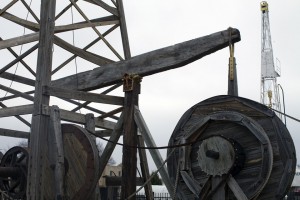Gateway to Growth: R&D in the Oil & Gas Industry
 From operating our vehicles to warming our homes, oil and gas is one the most commonly used and important commodities in the world. In 2014, oil provided approximately 38% of the world’s energy needs and is directly responsible for about 2.5% of world GDP. Indeed, oil and gas is a leading component of the world’s energy mix, a trend that will no doubt endure for many years to come.
From operating our vehicles to warming our homes, oil and gas is one the most commonly used and important commodities in the world. In 2014, oil provided approximately 38% of the world’s energy needs and is directly responsible for about 2.5% of world GDP. Indeed, oil and gas is a leading component of the world’s energy mix, a trend that will no doubt endure for many years to come.
However, in an increasingly technologically-driven world, the oil and gas industry is changing in two fundamental ways. Firstly, with majority of the world’s ‘easy oil’ already exhausted, the importance of utilizing sophisticated technologies to find and produce tomorrow’s hydrocarbons is becoming increasingly imperative. Secondly, high profile disasters such as Shell’s Brent Spar Incident in 1995 or the recent Deepwater Horizon accident (Perrons, 2014), has resulted in a significant shift in the expectations of the oil and gas industry in regards to safety, environmental stewardship and human welfare. Thus, in the face of these challenges, technology and innovation will play a pivotal role in the success or failure of the future of oil and gas firms.
Generating the question, how can oil and gas companies succeed in an industry where supply is limited and expectations are high? Ultimately, the oil and gas economy in the United States is at a critical juncture and innovation is what is going to push the economy forward.
Without a doubt, investing in R&D to create new and improved technologies is vital in enabling the industry to meet global energy demand. Moreover, with traditional forms of energy becoming harder to find, investing in new technologies will be vital in meeting the needs of an increasingly urbanised population and to combat environmental challenges in the decades ahead.
In addition, several companies may already be partaking in R&D activities and may not be aware of how the federal and state governments seek to support them through the Research and Development Tax Credit. Oil and gas companies are eligible for this credit, which presently values at almost 10 billion dollars, for work activities that are often already being conducted.
Below are some examples of qualifying research activities in the oil and gas industry:
- Offshore structure design
- Helidecks
- Development and testing in a variety of areas including shutdown services, plug and abandonment solutions and turnaround
- Plant design regarding safety, chemicals, pollution control and pressurization
- Wastewater solutions
- Designing and improving drilling
If you would like more information, Swanson Reed is hosting a free webinar on May 10th to discuss the benefits of the R&D tax credit for those in the oil and gas industry. Our specialists will be covering the basics of the credit, exploring an oil and gas case study and detailing the qualifying activities in the oil and gas industry. Could the R&D Tax Credit help your business?
If you’re interested in finding out more, register for our free webinar on EventBrite:
https://www.eventbrite.com/e/free-webinar-how-the-rd-tax-credit-can-benefit-the-oil-and-gas-industry-tickets-24977534478
Contact Swanson Reed’s R&D tax specialists today if you would like to know more about the R&D tax credit.

















